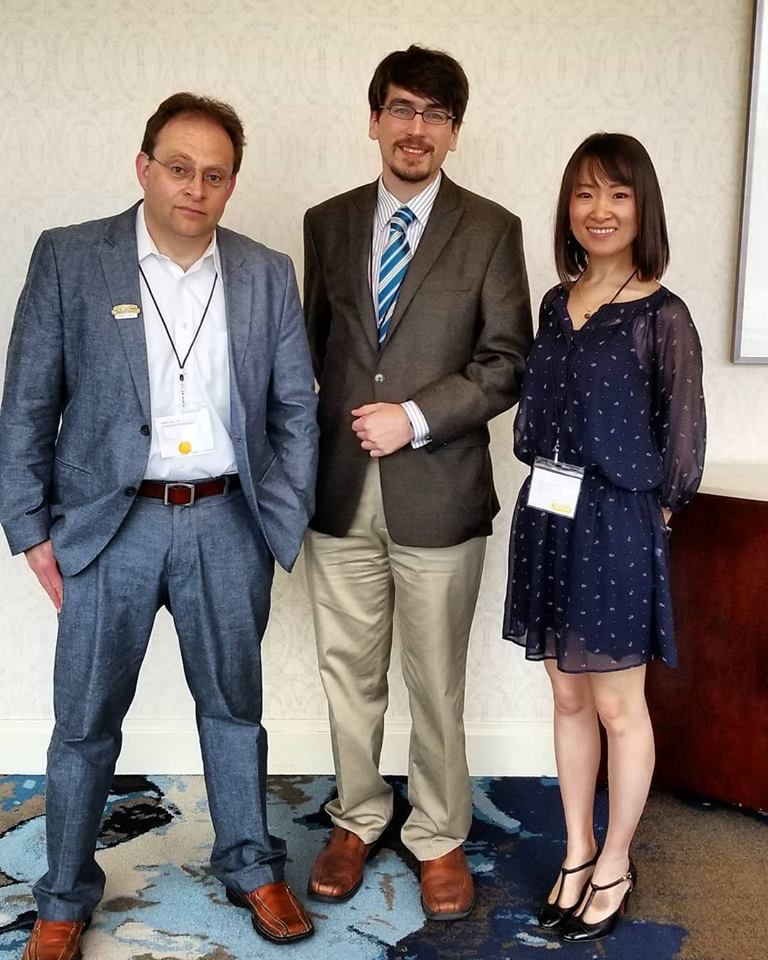 Anthony Hita and Melissa Wei Luo were fortunate enough to attend the Vernacular Architecture Forum’s 2018 Potomac Conference thanks to a combination of funding from the Vernacular Architecture Forum’s Ambassador Award and the PennDesign Albert Binder Travel Fellowship. As architectural conservators in training, out of classroom experiences play a crucial role in building our professional network and broader understanding of the built environment.
Anthony Hita and Melissa Wei Luo were fortunate enough to attend the Vernacular Architecture Forum’s 2018 Potomac Conference thanks to a combination of funding from the Vernacular Architecture Forum’s Ambassador Award and the PennDesign Albert Binder Travel Fellowship. As architectural conservators in training, out of classroom experiences play a crucial role in building our professional network and broader understanding of the built environment.
The conference’s opening reception aboard the Cherry Blossom rolling down the Potomac to historic Mount Vernon acted as an appropriate inauguration to the tours and topics presented in the following days. In a sense, the trip ushered us into a mindset of traveling back in time in such a way that as we sat on the rear porch of Mount Vernon overlooking the river, we could almost imagine George and Martha Washington relaxing to the same views several centuries prior.
One of the most incredible qualities of vernacular architecture is its ability to communicate the experiences of disparate groups through space and time. This sense of transportation to another time continued the next day during the long but rewarding tour of Maryland’s Lower Western Shore. The tour stood out in particular because it provided an opportunity to not only see historic properties, but in many cases also to interact with owners and community members who live, work, and gather daily in them. Often, buildings are presented apart from the people who use them. Yet, vernacular architecture cannot exist separated from those whose needs and desires helped shape it. The buildings became not simply static edifices frozen in time, but living realms of humanity which are continually adapted to meet the challenges presented by continued use.
In particular, we quite enjoyed Kenah House for its sensible layout of interior space, secluded lower level bedroom, and quiet and comfortable work spaces. The congenial atmosphere of the house was reinforced by the current owner who took time to greet each of us and share his experiences of living and maintaining the space. His presence helped underscore the fact that the Kenah House is still a home. Likewise, St. Francis Xavier Church was enhanced by the presence of many of the members of its weekly worshipping community. The members shared their pride in their continued use of the historic building to meet the needs of their community.
We also benefited from the paper sessions on Saturday as they reinforced the fact that architecture is inevitably shaped by both internal and external forces. Susane Haveika’s paper on her experience studying Inuit architecture on the banks of the Arctic Sea was interesting as it showed how members of the community creatively responded to the Canadian government’s attempt to regulate and standardize housing, resulting in a very distinctive vernacular style. The session on Erasure in the Urban Vernacular Landscape was full of passionate voices regarding many social and preservation issues that plague American cities, such as gentrification, identity erasure, and loss of historic neighborhoods. As preservationists we can utilize our professional knowledge to act as intermediaries to mitigate these issues and try to help people ensure the survival of their heritage.
The conference was an exciting opportunity to be among seasoned professionals and discuss a wide range of topics relative to architectural history and preservation issues. As ambassadors, we hope to be able to interface with other students and professionals back in the Philadelphia area to help others experience the formative lessons engagement the VAF has provided us. We plan to take the issues and questions raised through participation in the conference back to our classroom and professional settings to encourage further connection between our peers and the greater field of vernacular architecture preservation.